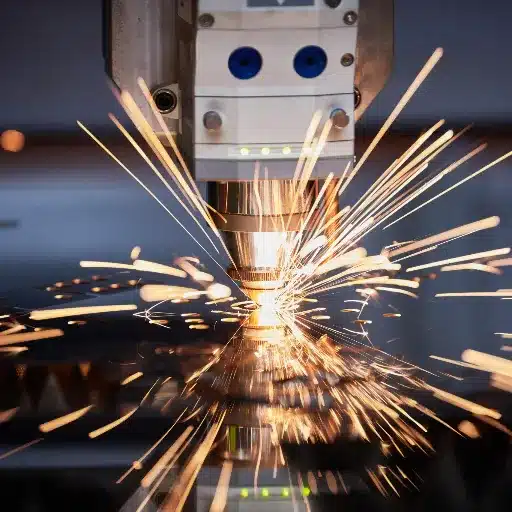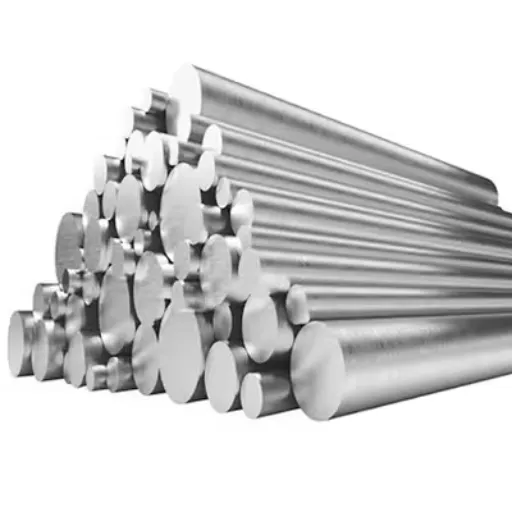Given its immense strength, corrosion resistance, and appealing aesthetics, stainless steel is a fundamental material in many industries. However, differentiating between the grades can often be complicated and tedious. This blog post is examined through the stainless steel hardness scale, especially grades 304 and 410, to explain the glaring differences. Their applications and distinguishing characteristics in properties, hardness, and performance will be discussed. From industrial materials to household ones, this guide will empower you to make the right choices with facts at hand.
What is the hardness scale used for stainless steel?
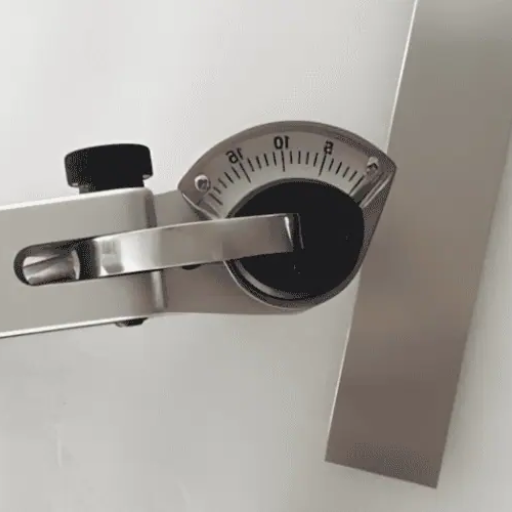
The Brinell Hardness (BHN), Rockwell Hardness (HRB or HRC), and Vickers Hardness (HV) scales are commonly used to measure the resistance a material has against wear, indentation, and deformation. These are the most widely used scales to judge wear resistance at certain degrees of hardness. The stainless steel hardness scale is used to measure and compare a material’s resistance toward deformation, wear, and indentation. Knowing the hardness metrics helps define the qualification of stainless steel grades for purposes like construction, manufacturing, or household tools while adding value to performance and durability standards.
Understanding the Rockwell Hardness Scale
The measurement of an object’s hardness by calculating indentations caused by a defined force is the same as using the Rockwell hardness scale. This approach is based on the resistance of the object’s surface against being indented by a defined load. The indentation – steel or diamond cone – as well as measures depth of hardness. The common Rockwell scales for stainless steel are HRB and HRC. HRB is for softer metals, while HRC is perfect for more rigid stainless steel. Due to the lack of extensive surface preparation, the quick pace, and the simplicity of the process, this test is widely preferred. Remaining within the bounds of the Rockwell scale also aids in guaranteeing the component’s rigidity is suited for its essential purpose whilst being accompanied by other desirable qualities like GB toughness and GB wear resistance.
How does the Rockwell scale compare to other hardness scales?
The Rockwell scale is often determined to be more favorable than other hardness scales, such as Brinell and Vickers, because of its ease of use and quick testing procedures. The Brinell test, in contrast, applies a larger indentation sphere and often requires more time for analysis. Unlike the Brinell test, the Rockwell test gives the user a direct numerical value without elaborate calculation. While the Vickers test gives significantly more precision and checks on thin materials, it is much more complicated as it involves using a diamond-shaped indenter cleaning cut pyramid, which can cause complications and may result in wasted time.
Comparison of Technical Parameters
| Hardness Scale | Indenter Type | Load Range | Best For | Advantages |
|---|---|---|---|---|
| Rockwell (HRB/HRC) | Steel ball / Diamond cone | 60 – 150 kgf | Metals of different hardness | Fast, direct, minimal prep needed |
| Brinell | Steel or carbide ball (10 mm) | 500 – 3000 kgf | Softer materials, castings | Good for rough surfaces |
| Vickers | Diamond pyramid | 1 – 100 kgf | Thin materials, micro parts | High precision |
Overall, the Rockwell scale’s adaptability across various materials and its straightforward process make it a practical choice compared to these alternatives.
Why is hardness necessary for stainless steel applications?
The Hardness of materials is very important for the application of stainless steel as it affects the service life of the material, its resistance to abrading or erosion, and the magnitude of mechanical pressure that can be exerted upon it. When selecting stainless steel for a project, I have to consider the hardness of the material as an aspect of performance measures for the conditions of use, be it scratching in decorative contexts or sustaining in industrial working environments. It is one of the main determinants of performance over time and fitness for particular purposes.
How does the hardness of 304 stainless steel compare to other grades?
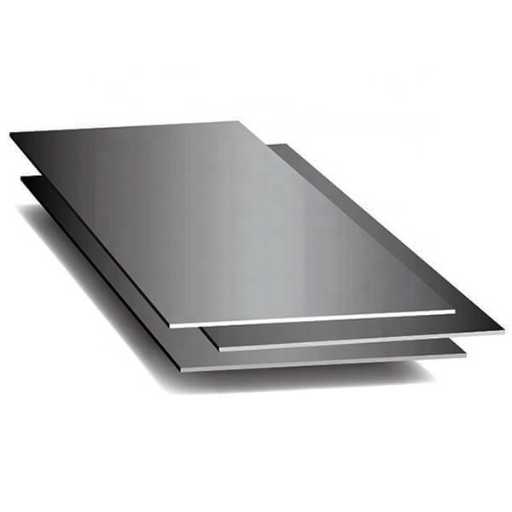
Compared to other stainless steel grades, the hardness of 304 stainless steel is considered to be relatively low. It has moderate strength, moderate resistance to wear, good ductility, and high resistance to corrosion. 304 is more complicated than 316 stainless steel but is also more susceptible to corrosion in chloride environments. On the other hand, 440C or 17-4 PH grades have much higher hardness values and are recommended for use where there is extreme wear and tear or when high structural strength is needed. Still, 304 remains popular and widely used because of its good performance and high machinability.
Typical hardness range for 304 stainless steel
When annealed, 304 stainless steel’s hardness is typically between 70 and 90 HRB on the Rockwell B scale. There may be some deviations due to different compositions or processes, but 304 stainless steel is mainly known for its toughness and machinability and is not considered too hard. With annealing, the strength and workability performance are optimal for many applications.
Comparing 304 to 316 stainless steel hardness
Comparing the hardness between 304 stainless steel and 316 stainless steel, both have similar performance characteristics, but 316 tends to be somewhat more complicated due to the molybdenum content. In most cases, 304 stainless steel will have a hardness of 70-90HRB, and 316 will be within the range of 79-95 HRB. The difference in value aside, the most notable difference comes from the corrosion capabilities; in this case, 316-grade stainless steel resists corrosion in harsh environments, thus requiring the addition of molybdenum. Toughness and machinability are given in both grades, but the selection frequently depends on the environment rather than the more complex material.
Hardness of 304 vs. carbon steel
Carbon steel tends to be more challenging than 304 stainless steel and is more wear-resistant due to its higher carbon content. While carbon steel is more complex, it is also more prone to rust and corrosion if not appropriately protected. This is why 304 stainless steel is preferred in the presence of moisture or corrosive materials, as it is better suited for such environments. It is important to note that 304 stainless steel is not primarily valued for its toughness but rather for its corrosion resistance and durability. Ultimately, the decision comes down to whether hardness or suffering from environmental factors is of more significant concern for the given application.
What factors affect the hardness of stainless steel?
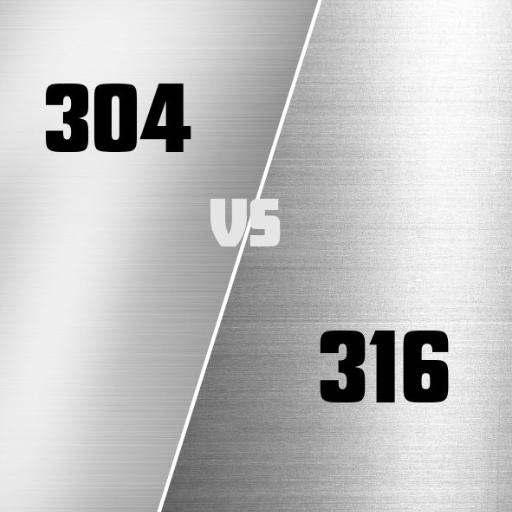
The primary factor determining the hardness of stainless steel is its chemical composition, particularly the amount of carbon, chromium, and other alloying elements. Several issues, such as quenching and tempering heat treatment processes, can also significantly impact the hardness of the material by changing its microstructure. Hardness may be enhanced due to work hardening during mechanical deformation processes such as forging or rolling. Nevertheless, the grade of stainless steel and the method of fabrication will determine the material’s hardness.
Impact of alloying elements on stainless steel hardness
The alloying elements have an essential effect on the hardness of stainless steel. From my research, carbon increases hardness and strength quite a bit because it forms carbides in the steel. When used in large quantities, chromium increases corrosion resistance and contributes to hardness. Other elements, nickel and molybdenum, affect hardness by stabilizing specific microstructures and protecting the material. Depending on the application, heat treatment and the percentages of these elements may be adjusted to achieve the required hardness level.
How heat treatment influences stainless steel hardness
Stainless steel microstructure changes significantly with heat treatment, which influences stainless steel hardness. To achieve the hardness of a specific value, processes like annealing, quenching, and tempering are done. Quenching, for example, involves cooling the steel fast from elevated temperatures (around 1000°C-1100°C for austenitic stainless steels) so that martensitic structures set in. The increase in hardness due to these actions may be reduced by tempering performed around 200°C-600°C, where brittleness is reduced and hardness maintained. Precipitation hardening for particular grades of stainless steel involves aging the material at 480°C-620°C to allow strengthening particles to be positioned in the microstructure. These parameters need to be adjusted so that the steel has the mechanical and durability properties required for the purpose designed.
The role of microstructure in determining hardness
Microstructural features dominate among material characteristics at the microscopic level defining the hardness of materials, including steels. The particular arrangement and spreading of all constituents like ferrite, austenite, martensite, or carbides dictate their hardness properties. To illustrate, a fine-grained martensitic structure usually is more complex because it is more difficult to deform. Also, other treatments, such as tempering or precipitation hardening, seek to achieve desired hardness and toughness using microstructural modification. These features within a processed material fulfill the necessary requirements of the application.
Which grade of stainless steel is the hardest?
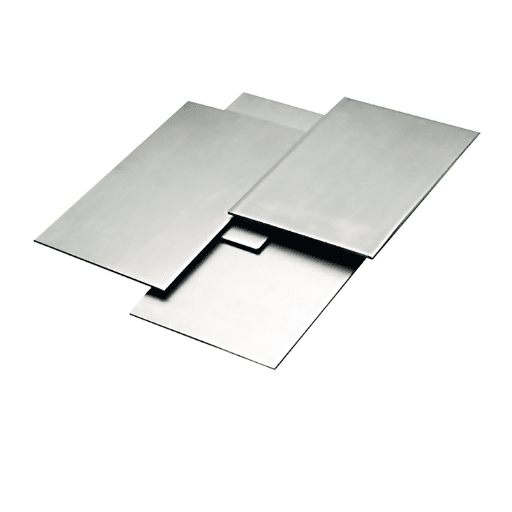
Grade 440 is regarded as the most hardenable grade of stainless steel. When appropriately heat treated, this stainless steel can develop a very high hardness, often greater than Rockwell C60, making it useful for extreme wear applications, such as cutting tools and bearings. It is a high-carbon martensitic stainless steel, so it is considered one of the hardest stainless steel grades.
Exploring martensitic stainless steel grades
Martensitic stainless steels are high strength, resilient to wear, and can be hardened by heat. These characteristics allow them to be used in equipment such as knives, cutting tools, and turbine blades. The following is a brief analysis of key martensitic grades along with their technical parameters:
- Grade 410
- Hardness: Achievable Rockwell C50 post-heat treatment.
- Composition: Lower carbon (~0.15%), 12-13% chromium.
- Applications: Open-use grade intended for fasteners, medical devices, etc.
- Grade 420
- Hardness: Achievable Rockwell C56 at maximum strength.
- Composition: 13% chromium with 0.15-0.40% carbon.
- Applications: Widespread usage in surgical instruments and cutlery because of hardness and anti-corrosive properties.
- Grade 440C
- Hardness: Frequently over Rockwell C60 with heat treatment.
- Composition: 0.95-1.2% carbon and 16-18% chromium.
- Applications: Exceptional hardness suited for bearings, cutting tools, and other parts prone to wear.
Various grades allow for preferred selection based on versatility in construction and specific needs. The correct heat treatment is necessary in martensitic stainless steel to reach the intended performance level.
The hardness of 420 stainless steel
The hardness of 420 stainless steel is dependent on the heat treatment it is subjected to. It is softer than many steels, but when sufficiently hardened and tempered, the Rockwell hardness is usually around 50 HRC—56 HRC. Because of this, it can be used for moderate abrasive wear resistance components that need to withstand high stresses, for example, in cutting tools or surgical instruments. Proper heat treatment is the key to achieving these hardness values and performance.
Comparing austenitic and martensitic stainless steel hardness
Based on my findings, due to differences in their metallurgical structures, austenitic stainless steels achieve lower hardness levels than martensitic stainless steels. After annealing, 304 and 316 austenitic grades are usually within the range of 70 to 95 HRB (Hardness Rockwell B scale). In contrast, 420 and 440C martensitic grades are substantially more rigid, achieving anywhere between 48HRC to 58HRC (Hardness Rockwell C scale), depending on their particular heat treatment.
Take note of specific technical parameters, in particular:
- Austenitic grades of stainless steel (304, 316):
- Hardness (annealed): ~70-95 HRB
- Tensile Strength (typical): ~515-750 MPa
- Martensitic grades of stainless steel (420, 440C):
- Hardness (hardened): ~48HRC to 58HRC
- Tensile Strength (hardened): ~700-1900 MPa (depends on treatment)
Through quenching, martensitic steel undergoes martensitic transformation that maximizes hardness while increasing brittleness. Austenitic steel, with its low carbon content and face-centered cubic structure, will retain ductility. These feature differences influence the application areas, resulting in the implementation of martensitic steel in constructing high-strength tools and parts that are more resistant to wear. In contrast, austenitic steel is used where resistance to corrosion and formability are needed.
How can the hardness of stainless steel be improved?
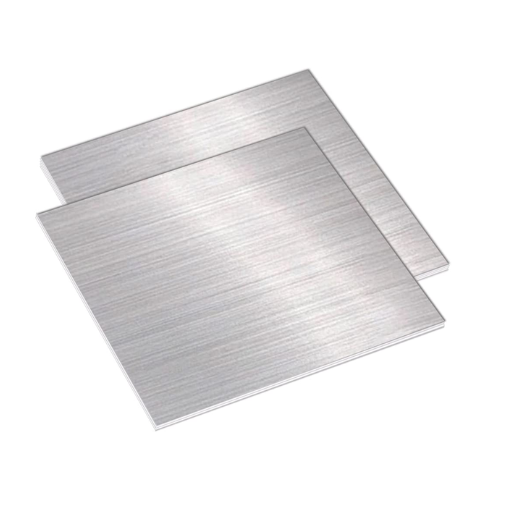
Heat treatments such as quenching and tempering can improve stainless steel’s superiority by reshaping the microstructure to strengthen it further. For treated martensitic stainless steel, certain heat treatments such as hardening and tempering are essential due to their ability to form martensite, which results in higher strength. Also, surface hardening treatments such as nitriding and carburizing can improve the hardness of the stainless steel by creating a hard outer shell while retaining the core’s toughness.
Heat treatment methods for increasing hardness
Per my findings, the heat treatments used to achieve higher hardness levels for stainless steel are quenching, tempering, and annealing. Quenching means rapidly cooling the steel’s temperature to martensite levels, improving hardness. The next step to quenching and tempering is to reintroduce heat moderately, promoting an optimum amount of toughness while maintaining the hardness. Another way is through surface treatments such as nitriding, where nitrogen specifically is used to harden the surface. These steps are handy for martensitic stainless steel, as their microstructure is amenable to such treatments.
Surface hardening techniques for stainless steel
Surface hardening techniques can be applied to increase the wear resistance as well as the durability of stainless steel. They are divided into groups based on their methods as follows:
- Nitriding
- Process: Controlled environment introduction of nitrogen into the outer layer of stainless steel while heating it to about 500-550°C.
- Effect: A hard protective layer that is resistant to corrosion is developed.
- Application: Applicable to both martensitic as well as ferritic types of stainless steels.
- Carburizing
- Process: Diffusion of carbon into the surface by placing the material in a heater (800-950°C) with a carbon-rich environment.
- Effect: Surface hardness is maximized with the likelihood of decreased stainless steel corrosion resistance, requiring post-treatment care.
- Application: For some grades of stainless steel, which are less sensitive to corrosion.
- Laser Hardening
- Process: Rapid heating of the steel surface using a high-powered laser which is followed by quick self – quenching.
- Effect: Treatment to a specific area results in a hardened martensitic layer.
- Advantages: Less distortion while achieving hardening in sensitive areas.
- Shot Peening
- Process: Surface bombardment of stainless steel using small hard particles to induce compressive stress.
- Effect: Improved resistance to stress corrosion cracking and fatigue strength.
- Parameters: Performed with small shots of 0.1-1mm at approximately 50-100m/s velocity.
The choice of these techniques depends on the intended use and the grade of stainless steel being processed. The precise management of the processing parameters is crucial for achieving the expected outcomes.
Alloying additions to enhance hardness
The alloying elements are essential in the hardening of stainless steel. As far as I know, carbon and nitrogen increase hardness significantly and often do so by forming carbides or strengthening solid solution. Chromium is also essential for corrosion resistance and contributes to hardness when combined with carbon in the form of chromium carbides. Molybdenum and vanadium likewise improve hardness due to carbide formation which tends to increase wear resistance. Each addition has to be balanced carefully to retain specific material properties because too much alloying can lead to poor toughness and machinability.
What are the trade-offs between hardness and other properties in stainless steel?
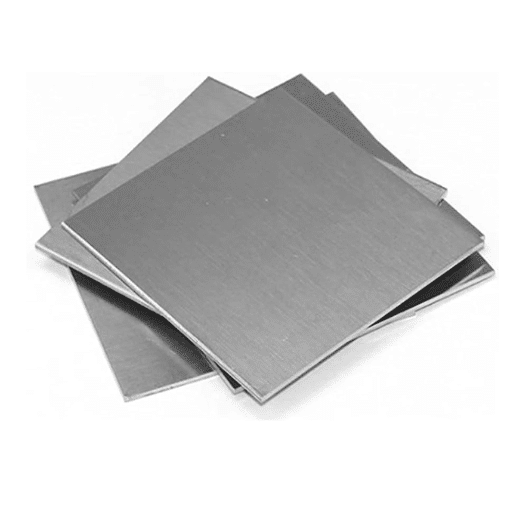
An increase in hardness in stainless steel comes at the expense of other properties such as toughness, ductility, and machinability. Generally, more excellent hardness results in more excellent resistance to abrasion, but it may also make the material brittle, reducing its impact energy absorption capability. Furthermore, too much alloying to improve hardness may make the steel more difficult to machine, and in some conditions, reduce resistance to corrosion. When designing for a particular application, it is crucial to find the proper balance between hardness and other properties.
Balancing hardness and corrosion resistance
A careful review of the application is imperative in balancing hardness and corrosion resistance in stainless steel. Improving hardness usually means more alloying constituents, such as carbon and/or nitrogen, which can lead to lowered corrosion resistance in some situations. My balance-altering approach would be alloy design focusing on introducing chromium, molybdenum, or nickel in their optimal proportions to sustain corrosion resistance while not significantly decreasing toughness and machinability. This method guarantees that the material adequately endures wear and other hostile environmental conditions relevant to its application.
The relationship between hardness and ductility
I believe most materials, including stainless steel, exhibit the most common property of having an inverse correlation between ductility and hardness. Increasing hardness tends to mean increased brittleness because the material positioning itself to undergo deformation and stress becomes a dominant issues. Yet, the relationship is not always that clean; moderate ductility and sufficient hardness with softening metallurgical treatment as well as with intelligent control of alloy melt’ s composition may be achieved to meet requested parameters of the application.
How hardness affects wear resistance and durability
From my experience, hardness is very important for determining both wear resistance and durability. It is well-known that the more complex a material is, the more wear resistant it is. This is explained by the fact that more rigid materials are less likely to undergo plastic deformation or abrasion during contact stress. For instance, in stainless steel, the ability for a surface to withstand friction and wear improves considerably with the grade of hardness, which is often increased by heat treatment or work hardening. However, these improvements in hardness should not come at the expense of toughness to avoid brittle failure. Rockwell or Vickers hardness values are commonly known and well documented (300 HV indicating moderate wear resistance or over 500 HV indicating high wear resistance), and so is the surface roughness of precision parts (which is Ra < 0.2 µm) and the friction coefficient, all of these should be optimized as well to guarantee durability when used in actual life operating conditions.
References
- SteelPro Group: 410 Stainless Steel vs 304
- BOYI Prototyping: 410 Stainless Steel vs 304
- Aoxing Metal: 410 Stainless Steel vs 304
Frequently Asked Questions (FAQ)
Q: What is the hardness scale used for stainless steel?
A: Stainless steel’s hardness is typically measured using the Rockwell hardness test, with scales such as Rockwell B (HRB) and Rockwell C (HRC). For softer stainless steels, the Vickers hardness scale is also used. The exact hardness can vary based on the stainless steel’s specific grade and heat treatment.
Q: How does the hardness of 304 stainless steel compare to other grades?
A: Grade 304 stainless steel, an austenitic stainless steel, typically has a hardness of about 70-80 HRB. This is considered relatively soft compared to some other grades. For example, martensitic stainless steels like 410 can reach hardness levels of up to 55 HRC, which is significantly more complex than 304.
Q: What are the properties of 304 stainless steel?
A: 304 stainless steel is an austenitic stainless steel containing approximately 18% chromium and 8% nickel. It offers excellent corrosion resistance, good formability, and is widely used in various applications. While it’s not the most challenging grade, it provides a good balance of mechanical properties and corrosion resistance, making it suitable for many industrial and consumer applications.
Q: How does the hardness of 316 stainless steel compare to 304?
A: The hardness of 316 stainless steel is similar to that of 304, typically ranging from 70-85 HRB. Both are austenitic stainless steels with comparable mechanical properties. However, 316 contains molybdenum, which gives it better corrosion resistance than 304, especially in chloride environments.
Q: What is the most challenging grade of stainless steel?
A: The hardest grades of stainless steel are typically found in the martensitic series. For example, grade 440C can reach heat-treated hardness levels of up to 60 HRC. Other hard grades include 17-4 PH (precipitation-hardening stainless steel) and some of the more specialized tool steels. These grades offer high wear resistance but may have lower corrosion resistance than austenitic grades.
Q: How can you improve the hardness of stainless steel?
A: There are several methods of improving stainless steel’s hardness. Heat treatment (quenching and tempering) can significantly increase hardness for martensitic stainless steels. Work hardening can enhance the hardness of austenitic stainless steels like 304 and 316. Surface hardening techniques such as nitriding or carburizing can also increase surface hardness while maintaining a rigid core.
Q: How does the hardness of stainless steel compare to other metals?
A: The hardness of stainless steel varies greatly depending on the grade and treatment. Generally, austenitic stainless steels like 304 and 316 are softer than many carbon steels but harder than pure metals like copper or aluminum. Hardened martensitic stainless steels can be as challenging as or more complicated than many tool steels. However, they’re typically less complex than materials like tungsten carbide or certain ceramics.
Q: How does the microstructure of stainless steel affect its hardness?
A: The microstructure of stainless steel significantly influences its hardness. Austenitic stainless steels (like 304 and 316) have a face-centered cubic structure, which results in lower hardness but good ductility. Martensitic stainless steels have a body-centered tetragonal structure after heat treatment, which allows for much higher hardness. Ferritic stainless steels have a body-centered cubic structure, typically resulting in hardness levels between austenitic and martensitic grades.


